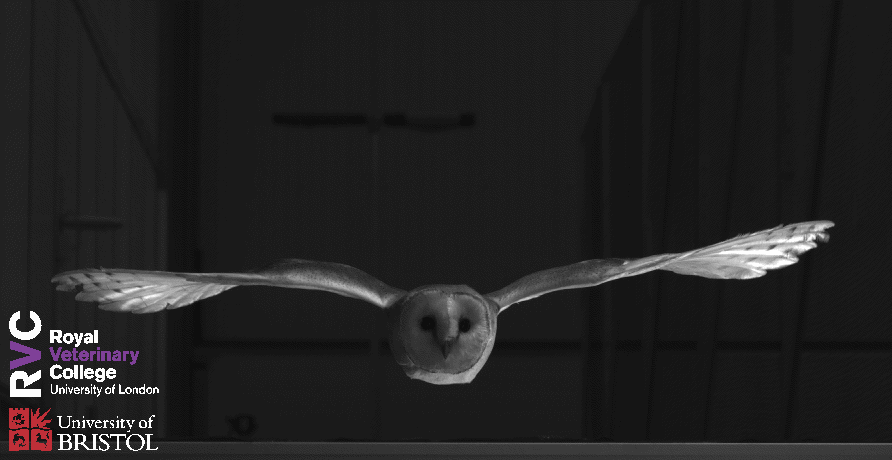Birds have been a huge inspiration for many technologies in the aviation industry, but human aircraft cannot yet match their ability to fly straight and steady through storms. However, a team of scientists from the University of Bristol and the Royal Veterinary College have uncovered birds'secret to combatting wind speeds as fast as their own flight.
"We've been flying for about 100 years, just a little over since the Wright brothers [who were the first to take off powered flight]. They knew that getting enough lift to fly was a challenge, but that was easier when compared with stabilising and controlling the flight," said Professor Richard Bomphrey, one of the study's authors from the Royal Veterinary College.
Read more about flight:
- Flightless birds’ feathers offer clues to evolution of flight
- Star Trek-inspired aeroplane powered by ‘ionic wind’ takes flight
- Tiny, bat-winged dinosaur sheds light on the origin of flight
"They had a method for controlling the Wright Flyer that worked reasonably well – a series of cables which twisted the wing. But ever since then, we've built a rigid winged aircraft, mainly because the maths are a bit easier. It's easier to create wings which are stiff, and then they behave in a more predictable manner."
This works for certain flying conditions, where a rigid wing shape is optimal. But to improve flight performance in strong winds, a different, bio-inspired design for the wings of an aircraft would be better, says Bomphrey.
To find out how birds cope with wind, the team observed the flight of a goshawk, tawny eagle, tawny owl and a barn owl. The latter, who was named Lily, is the star of the team's publication in the Proceedings of the Royal Society B Journal.
"We built a gust generator so we could set the speed and direction of the wind, and then encouraged Lily to glide just where we wanted her to go," said Bomphrey. "We had high speed cameras and some motion capture cameras set on her, with which we could do a process called stereophotogrammetry; a way of getting three-dimensional shapes from a pair of cameras."

Watching Lily through these cameras, the team discovered that during flight her wings acted as a suspension system, stabilising the trajectory of the head and the torso in strong winds.
"[The wing] does this in a rather elegant way, which should be quite familiar to people who play any baton ball games or racquet sports. That's the concept of the sweet spot," said Bomphrey.
"So if you are playing cricket and as the heavy ball comes down you hit it with the very end of the bat, the handle will jump out of your hands forward. Whereas if you hit the ball right up close to the handle, then the handle gets shoved backwards. That tells you that there's a point between those two areas where you might hit the ball and the handle doesn't get jarred forwards or backwards. All the forces on the bat to cancel and you don't feel anything. If you're lucky enough to hit a ball as well as that, then it feels effortless."
Read more about birds:
- Birds and reptiles cry tears just like our own
- Bird behaviour revealed using Alan Turing's mathematical models
- 14 stunning photos of birds making incredible journeys across the Earth
Bomphrey says the bird's wing can be thought of as the bat, the gust of wind as the ball. In changing weather conditions, the bird pivots her wings around the shoulder, so that the gust hits right in that sweet spot, all the forces and torques cancel at the hinge of the shoulder joint. The wing moves, but the body doesn't.
The team say this knowledge could inspire new designs for the aviation industry, initially starting with small scale and non-manned aircraft but eventually influencing passenger planes.
"[The technology] is totally ready to go, because it's a phenomenon that we've observed in birds. The key part is that you must have the hinge, and you must have the right alignment. That can be done just by moving where the [mass is]," said Bomphrey. "We've actually done a bit of prototyping ourselves already with some toy gliders, demonstrating the same principle that we've seen in birds, rejecting about 40 per cent of exactly the same gust, in the lab with no onboard computer whatsoever."
Reader Q&A: What’s the largest flying animal?
Asked by:Sam Crossley, Bradford
In terms of wingspan, the largest birds are those adapted for soaring, long-distance flight. The wandering albatross is the current record holder, with a maximum recorded wingspan of 3.7 metres, but prehistoric animals were even more impressive.
Pelagornis sandersi, a bird which lived 25 million years ago, had an estimated wingspan of up to 7.4 metres. Like albatrosses, it probably took to the air by running downhill into a headwind, or launching off cliffs. However, even P. sandersi was dwarfed by some of the pterosaurs, those flying reptiles from the time of the dinosaurs. The largest so far discovered is Quetzalcoatlus northropi, which may have weighed more than 200kg with a wingspan of 11 metres. That’s as wide as a Cessna 172 aeroplane! Computer simulations have shown that Q. northropi could soar at 130km/h and stay aloft for up to 10 days
Read more:
